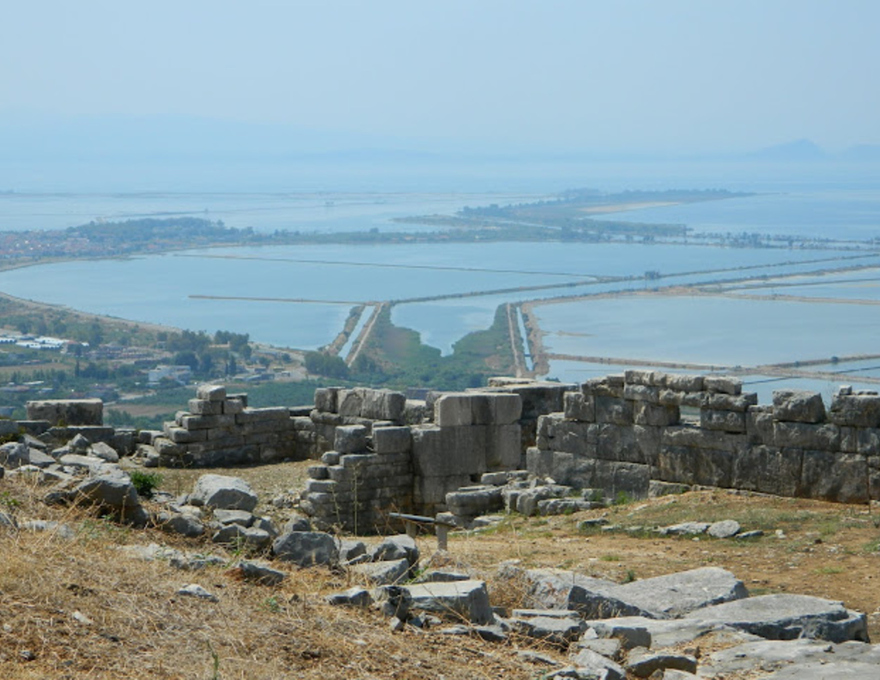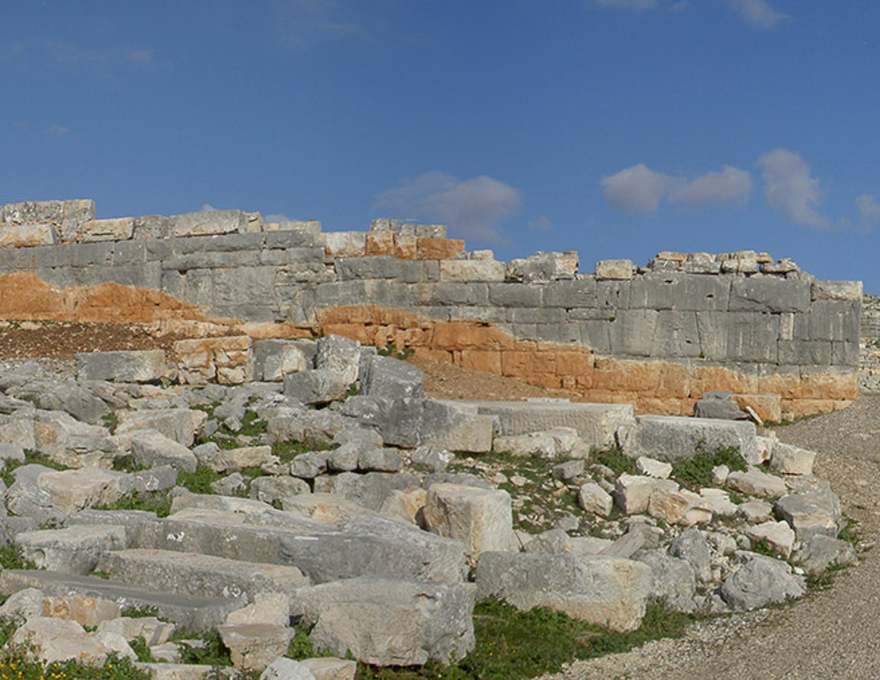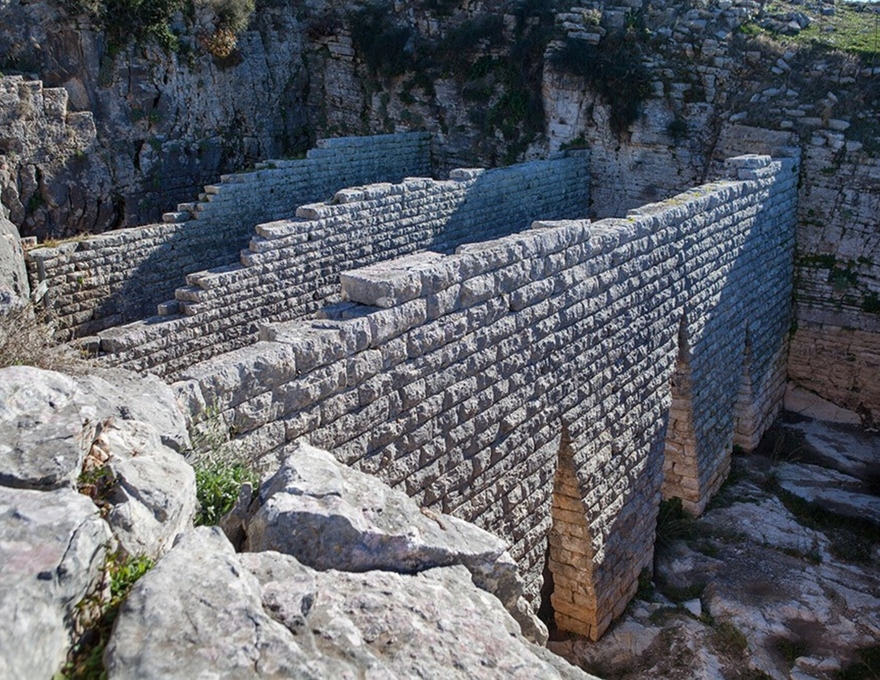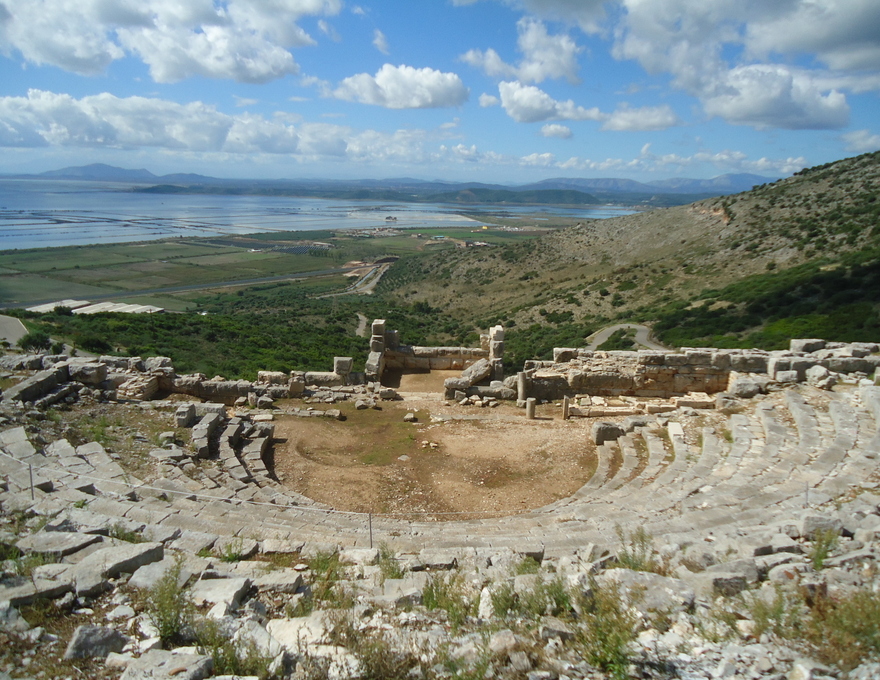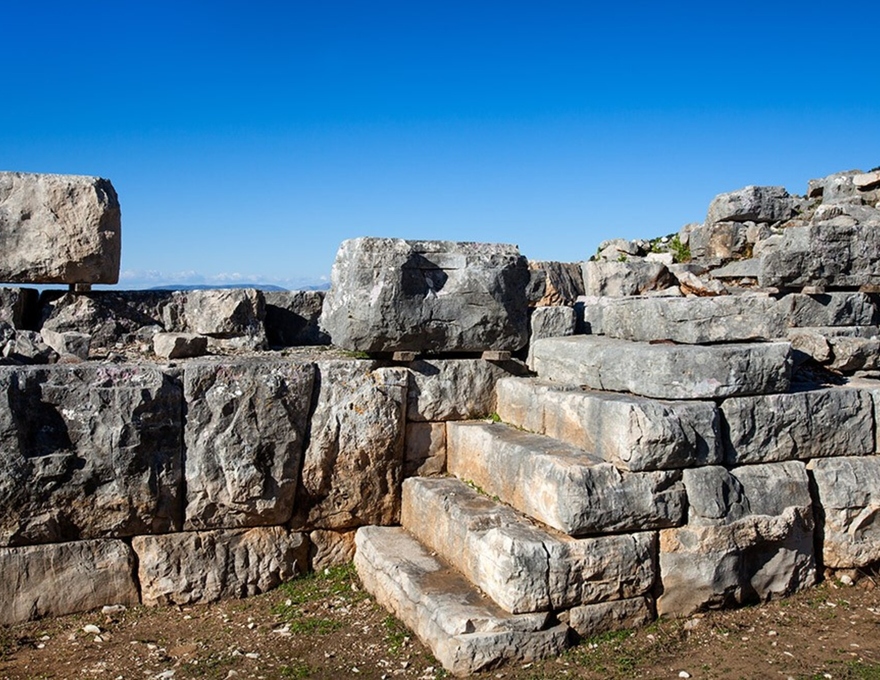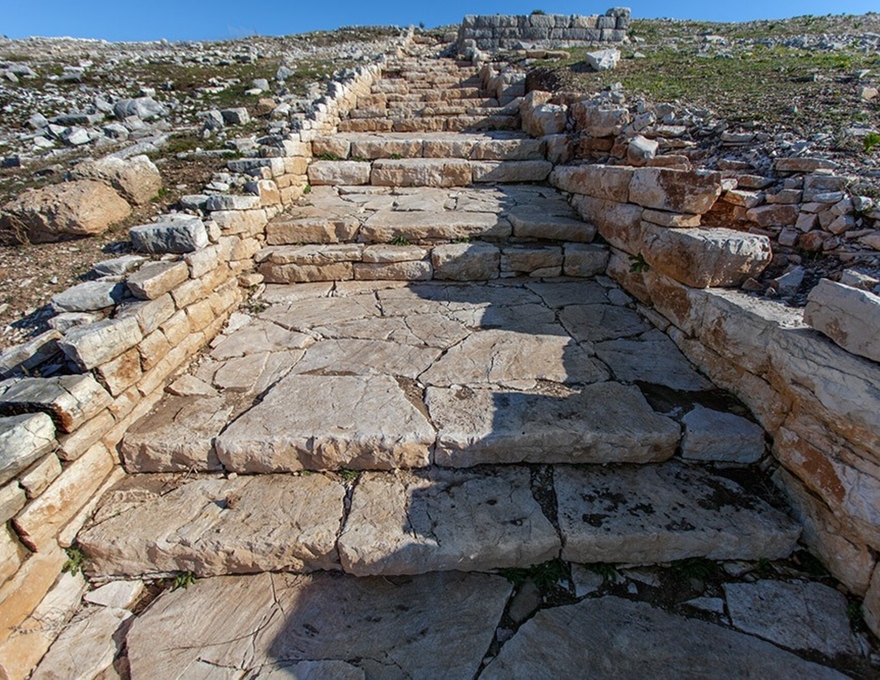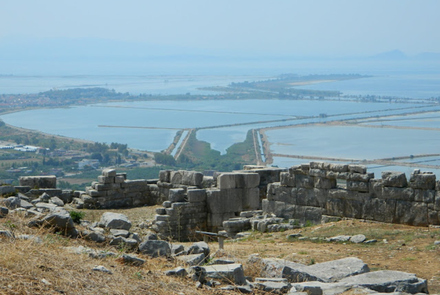An den südwestlichen Ausläufern des Berges Arakynthos (Zygos) und nur 5 km nordwestlich der Heiligen Stadt von Messolongi erhebt sich imposant die mächtige Festung von Nea Plevrona, die zwei benachbarte Hügel einnimmt. Nea Plevrona war eine der größten antiken Städte im westlichen Ätolien. Die auch heute noch beeindruckende Festung wird von den Einwohnern der Gegend „Burg der Frau Rini“ („Kastro tis kyra-Rinis“) genannt, ein Name, der mit jüngeren Legenden und Traditionen verbunden ist. Die Stadt verdankt ihren Namen dem Helden Pleuron, Sohn des Stammvaters von Ätolien Aitolos. Nach dem Geographen Strabon (Geographica 10, II, 4) wurde die Stadt nach 235/234 v. Chr. gegründet, also unmittelbar nach der Zerstörung des Alten Pleurona durch Demetrios II. von Makedonien, auch bekannt als Demetrios II. Aitolikos. Die weiter südlich gelegenen Ruinen auf den beiden niedrigen Hügeln Asfakovouni (Gyftokastro) und Petrovouni werden dem Alten Pleurona zugeschrieben.
At the SW end of Mount Arakynthos (Zygos), and at a distance of only 5 km NW of the Holy City of Messolonghi, the strong fortification of Nea Pleurona rises imposingly, occupying two neighboring hills. Nea Pleurona was one of the largest ancient cities of Western Aetolia. Its fortification, which impresses even today, is called by the inhabitants of the area "Castle of the Lady Rhine", a name linked to newer legends and traditions. It owes its name to the hero Pleuron, son of Aitolos and progenitor of Aetolia. According to the geographer Strabo (Geography 10, II, 4), the city was founded after 235/234 BC, i.e. immediately after the destruction of Old Pleurona, by Demetrius II the Macedonian, also known as Aetolicus. The ruins located further south on the two low hills, Asfakovouni (Giftokastro) and Petrovouni, are attributed to Palaia Pleurona.

